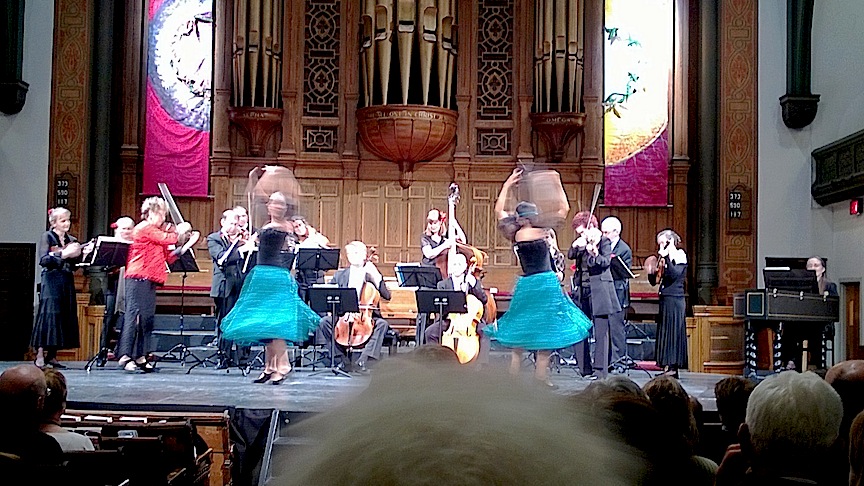
Between visiting violinist Elizabeth Wallfisch, composer Luigi Boccherini and two dancers from Esmerelda Enrique Dance Company, Tafelmusik has a lot of spark to offer Trinity-St Paul’s Centre audiences this week. At Wednesday’s first performance, enthusiasm trumped an uneven programme.
- Classical Music 101: What Does A Conductor Do? - June 17, 2019
- Classical Music 101 | What Does Period Instrument Mean? - May 6, 2019
- CLASSICAL MUSIC 101 | What Does It Mean To Be In Tune? - April 23, 2019
The programme followed non-Spanish-born composers with connections to the Iberian peninsula, beginning with the baroque period and ending with Luigi Boccherini (1743-1805), who has come down to us in the shadow of Mozart and Haydn.
Wednesday’s concert clearly proved that Boccherini deserves far more attention.
The concerts are also set up to highlight several string players, starting with guest leader Wallfisch, who has a style of playing unlike anyone else’s. She is particularly expressive with her bow, pushing the dynamic envelope of a baroque violin, but she does it at the expense of a beautiful sound.
In a Boccherini concerto grosso in the second half of the programme, we could compare Wallfisch’s angular playing directly against Tafelmusik member Aisslinn Nosky’s, which was silken as well as powerful.
Having a soloist play that differently from the rest of the orchestra made for a less cohesive listening experience, but it did also make for a different sound from the one we’re used to.
The evening opened with the Concerto No. 6 by Charles Avison — a piece that helped put Tafelmusik on the map a quarter of a century ago. Under Wallfisch’s leadership, it was brisk and purposeful and energised.
There were two pieces from less-well-known composers: A Concerto for Violin by Giacomo Facco (1676-1753) that had an engrossingly polyphonic final movement; and a Symphony by Gaetano Brunetti (1744-1798) that highlighted the five excellent wind players as the composer indulged in some very strange harmonic experiments.
The second half of the evening belonged to Boccherini, starting with an enchanting voyage through nighttime Madrid built on actual sounds of the street in the late 18th century. Cellists Allen Whear and Felix Deak seemed to really enjoy turning their cellos on their sides and strumming them like guitars.
This is where dancers Esmerelda Enrique and Paloma Cortés turned up on stage the first time, providing passionate yet poised movement to go with the music.
The evening closed with the dancers going full-tilt along with the orchestra in Introduction and Fandango, which left everyone breathlessly smiling.
Wallfisch is a nice change of pace. The orchestra was excellent, as were the dancers. But it’s Boccherini who I really want to explore more after listening to this programme.
For details on this programme, which continues until Sunday afternoon, click here.
John Terauds
- Classical Music 101: What Does A Conductor Do? - June 17, 2019
- Classical Music 101 | What Does Period Instrument Mean? - May 6, 2019
- CLASSICAL MUSIC 101 | What Does It Mean To Be In Tune? - April 23, 2019



